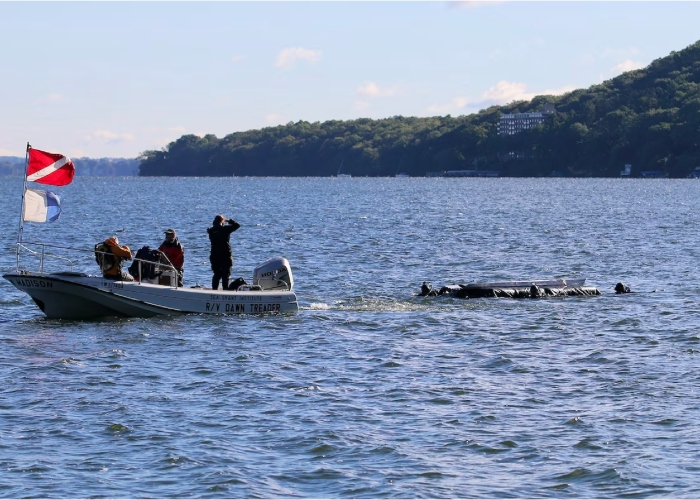In Madison’s Lake Mendota, a routine dive led to a profound archaeological discovery by Wisconsin maritime archaeologist Tamara Thomsen. What initially appeared to be an ordinary object turned out to be a 1,200-year-old dugout canoe, followed by the subsequent unearthing of an even older, 1,800-year-old canoe. These surprising finds connected the region’s history to the era of Viking raids and Charlemagne, providing a glimpse into a distant past.
Exciting new discoveries
Thomsen’s initial discovery in June 2021 led to a roller-coaster of speculation, obstacles, and determination. The canoe, believed to be anything from a 1950s artifact to a 300-year-old relic, stunned experts when carbon dating revealed it was carved from white oak around A.D. 850. The retrieval and preservation process was fraught with challenges. The recovery team battled snow and ice and dealt with the scarcity of essential preservation materials due to COVID-19. Skibo, the project’s head, even had to get scuba-certified and build a conservation tank himself to ensure the canoe’s safety.

Just when the hurdles seemed to have been overcome, another canoe was discovered in May 2022, a stunning 1,800 years old and broken into roughly 30 pieces. Described as handling like “wet cardboard,” the new find required a repetition of the earlier process. These struggles were soon overshadowed by the tragic death of Skibo during a dive in April 2023. Remembered as “the people’s archaeologist,” his dedication and love for his craft are an essential part of the canoes’ story. Scheduled to go on display at a state history center in 2026, these ancient artifacts and their discovery reflect the rich and layered history of the region, bringing a thousand-year-old story to life.
The dual discoveries of these dugout canoes, one from the time of Viking raids, and another even older, has not only enriched our understanding of history but also demonstrated the determination and passion that drive modern archaeology. These ancient vessels, having survived centuries underwater, now embark on a new journey, inspiring future generations to explore and connect with the past.